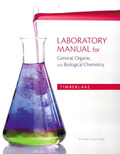
Concept explainers
a.
To determine:
The fiber which can mix with water.
Introduction:
The carbohydrates are also taken as the dietary fibers which cannot be digested with the enzymes of body. So they are classified in two classes, soluble fibers and insoluble fibers. The fibers which can mix with water are soluble fibers and the fibers which do not mix with water known as insoluble fibers.
b.
To determine:
The fiber which can lower the blood cholesterol.
Introduction:
The carbohydrates are also taken as the dietary fibers which cannot be digested with the enzymes of body. So they are classified in two classes, soluble fibers and insoluble fibers. The fibers which can mix with water are soluble fibers and the fibers which do not mix with water known as insoluble fibers.
c.
To determine:
The fiber that has a laxative effect.
Introduction:
The carbohydrates are also taken as the dietary fibers which cannot be digested with the enzymes of body. So they are classified in two classes, soluble fibers and insoluble fibers. The fibers which can mix with water are soluble fibers and the fibers which do not mix with water known as insoluble fibers.
Want to see the full answer?
Check out a sample textbook solution
Chapter 6 Solutions
EBK LABORATORY MANUAL FOR GENERAL, ORGA
- Lemon essential oil can be: Choose one answer. a. added to your drink of water b. used as a food flavoring c. used on your skin without a carrier oil d. used on a newborn babyarrow_forwardWhy is isopropyl alcohol (main ingredient in rubbing alcohol) used as a disinfectant?arrow_forwardWhat is a hemiacetal?arrow_forward
- Classify the following lipid: H3C CH3 HO CH3 Select one: a. steroid O b. wax Oc. triacylglycerol d. fatty acid e. prostaglandin Of. glycerophopspholipid H3C .CH3arrow_forwardlipid components 1 The block diagram of a phospholipid contains Select an answer and submit. For keyboard navigation, use the up/down arrow keys to select an answer. a glycerol and three fatty acid molecules b. glycerol, two fatty acid molecules, phosphate, and alcohol sphingosine, one fatty acid molecule, phosphate, and alcohol one fatty acid and one alcohol moleculesarrow_forwardWhat of the following solvents would dissolve triacylglycerols? a) Water and chloroform b) Acetic acid and water c) Chloroform and diethyl ether d) Aqueous NaOH and acetic acid e) They are soluble in water onlyarrow_forward
- 17. Match the lipid on the left with its description on the right. 1. lecithin 2. sphingomyelin 3. wax 4. cephalin 5. glycolipid a. An ester of a fatty acid and a high-molecular- weight alcohol other than glycerol. b. A lipid that contains sphingosine, fatty acids, a phosphate group, and a nitrogen-containing compound. I c. A lipid that contains fatty acids, a sugar, and glycerol. d. A lipid that contains glycerol, fatty acids, a phosphate group, and choline. e. A lipid that contains glycerol, fatty acids, a phophate group, and ethanolamine.arrow_forwardDraw the chemical structure of aspirin, and identify the functional groups that are present. You may want to refer to Chapter 6 to review functional groups.arrow_forwardWhat substances absorb moisture or promote the retention of moisture in the hair? O a. humectants b. astringents c. deionized d. keratinarrow_forward
- Choose the best classification for the molecule shown below. OH NH A) glycerophospholipid B) fatty acid C) steroids D) triglyceride E) sphingolipidarrow_forwardHow is paraffin oil emulsified?arrow_forwardThe structure of the fatty acid, linolenic acid, is shown below. How would you classify this fatty acid? a. saturated b. monounsaturated c. polyunsaturated d. waxyarrow_forward
 Chemistry for Today: General, Organic, and Bioche...ChemistryISBN:9781305960060Author:Spencer L. Seager, Michael R. Slabaugh, Maren S. HansenPublisher:Cengage Learning
Chemistry for Today: General, Organic, and Bioche...ChemistryISBN:9781305960060Author:Spencer L. Seager, Michael R. Slabaugh, Maren S. HansenPublisher:Cengage Learning Chemistry: Principles and ReactionsChemistryISBN:9781305079373Author:William L. Masterton, Cecile N. HurleyPublisher:Cengage Learning
Chemistry: Principles and ReactionsChemistryISBN:9781305079373Author:William L. Masterton, Cecile N. HurleyPublisher:Cengage Learning General, Organic, and Biological ChemistryChemistryISBN:9781285853918Author:H. Stephen StokerPublisher:Cengage Learning
General, Organic, and Biological ChemistryChemistryISBN:9781285853918Author:H. Stephen StokerPublisher:Cengage Learning Organic And Biological ChemistryChemistryISBN:9781305081079Author:STOKER, H. Stephen (howard Stephen)Publisher:Cengage Learning,
Organic And Biological ChemistryChemistryISBN:9781305081079Author:STOKER, H. Stephen (howard Stephen)Publisher:Cengage Learning, Introduction to General, Organic and BiochemistryChemistryISBN:9781285869759Author:Frederick A. Bettelheim, William H. Brown, Mary K. Campbell, Shawn O. Farrell, Omar TorresPublisher:Cengage Learning
Introduction to General, Organic and BiochemistryChemistryISBN:9781285869759Author:Frederick A. Bettelheim, William H. Brown, Mary K. Campbell, Shawn O. Farrell, Omar TorresPublisher:Cengage Learning Introductory Chemistry: An Active Learning Approa...ChemistryISBN:9781305079250Author:Mark S. Cracolice, Ed PetersPublisher:Cengage Learning
Introductory Chemistry: An Active Learning Approa...ChemistryISBN:9781305079250Author:Mark S. Cracolice, Ed PetersPublisher:Cengage Learning





